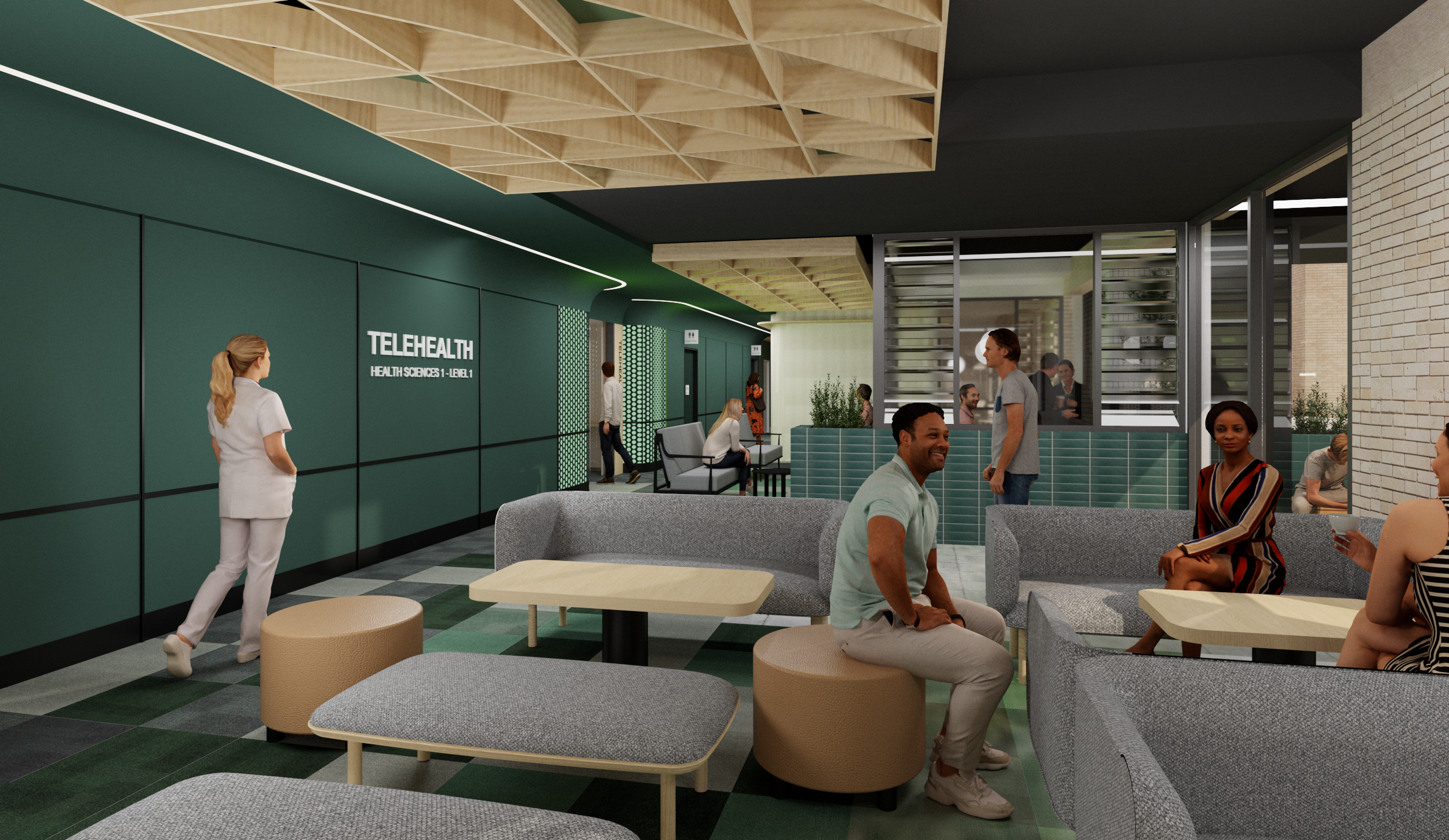
Improving public day-procedure clinics: What every health and facility manager needs to know
Our director Annie Robinson is on a mission to change the ‘look’ and ‘feel’ of public day-procedure clinics. Think fertility clinics, mental health clinics or virtually any medical facility where treatments are administered but patients are not required to stay overnight. “These can be highly emotional environments for patients, partners, support people, family members and, of course, their medical teams,” Annie explains. “The application of good design is a powerful way to help humanise these clinical settings and, ideally, provide comfort during periods of high anxiety and stress.”
Designing for efficiency + empathy
Annie acknowledges that, like any workplace, day-procedure clinics need to operate with flow and efficiency, as a primary requirement. To this end, she guides health managers and facility managers to take a ‘day-in-the-life’ approach. “We need to understand how the facility operates, from the moment a clinician or patient enters the clinic — right through to when they leave,” Annie explains. “This allows us to better comprehend how people move through the space, and then create designs that accommodate those behaviours and support efficient workflow.”


Images: Pre-administration spaces (internal renders by Spowers)
Respecting personal preferences
One-size-fits-all is not a design approach Annie supports. “In day-procedure settings, it’s important to nurture and reassure patients and provide options to use the space in ways that best suit their cultural, physical and personal preferences” Annie says. For example, Annie suggests considering the design of waiting areas, for instance, to accommodate both large areas as well as more private, smaller spaces for personal discussions and respite.
Additionally, Annie says sensory options should also be integrated within the design of these clinics. She advocates using neuroaesthetic principles, providing people with options to interact with environments that suit them as individuals. These spaces might be low-tech, low-light areas that are private, as well as more brightly lit open spaces. “This enables people to feel more ‘at home’ in the clinic as they’re empowered to make their own choices about where and how they use the space depending on how they are feeling in that moment.”
Annie and our colleagues are accustomed to making people feel ‘at home’. Having designed extensively for aged care and seniors living environments, where human-centred design is the focus, Annie is highly experienced at creating environments for a broad range of ages, genders and cultures.


Images: Private recovery spaces (Photography by Tatjana Plitt)
Embracing outdoor elements, indoors
“Connecting people to the natural environment, directly or indirectly, is referred to as ‘biophilia,’” Annie says. “There is considerable research confirming that biophilic design can be influential in the promotion of positive mental health outcomes by reducing stress and anxiety levels, and also by increasing patient recover responses.”
According to Annie, the Spowers studio is driving the design of these spaces away from environments that feel ‘institutional’ and ‘clinical’, towards designs she believes will benefit staff and gain better patient outcomes.
Affordable, future-focused design strategies
Whilst Annie admits the design of private day-procedure clinics may benefit from access to greater resources than their public counterparts, she’s adamant there are effective ways to elevate interior architecture within defined budgets. “Sometimes it can be as simple as colour and material selections,” she explains. “Selection of softer lighting and replacement of ‘task-style’ lighting in non-clinical areas are also simple changes that we consider in our designs.”
“Adaptive re-use is always high on our agenda and rigor around the assessment of existing built assets for reuse and re-imagination, together with clever planning around these assets, will often provide financial benefits, while still delivering the desired outcomes,” Annie says.
According to Annie, other considerations should include patient-focussed tech. “This is an area which is fast advancing – with user-centric and easy-to-use interfaces that assist with pre check-in, check-in and customising the patients ‘day stay’ – even down to the ability to order food, magazines, and to schedule therapies etc. This makes for a seamless patient-centric experience.” Annie believes this interface can also provide resource efficiencies in administration, operational and procedural aspects of the facility.
For public day-procedure clinics considering an upgrade, Annie says careful staging of works is required to ensure the surrounding facilities can remain operational while the new design unfolds.
Are you in the healthcare sector and keen to learn more about the design of improved public day-procedure clinics?
Annie Robinson welcomes your enquiry via email melbourne@spowers.com.au or by calling +61 3 9614 6144.
